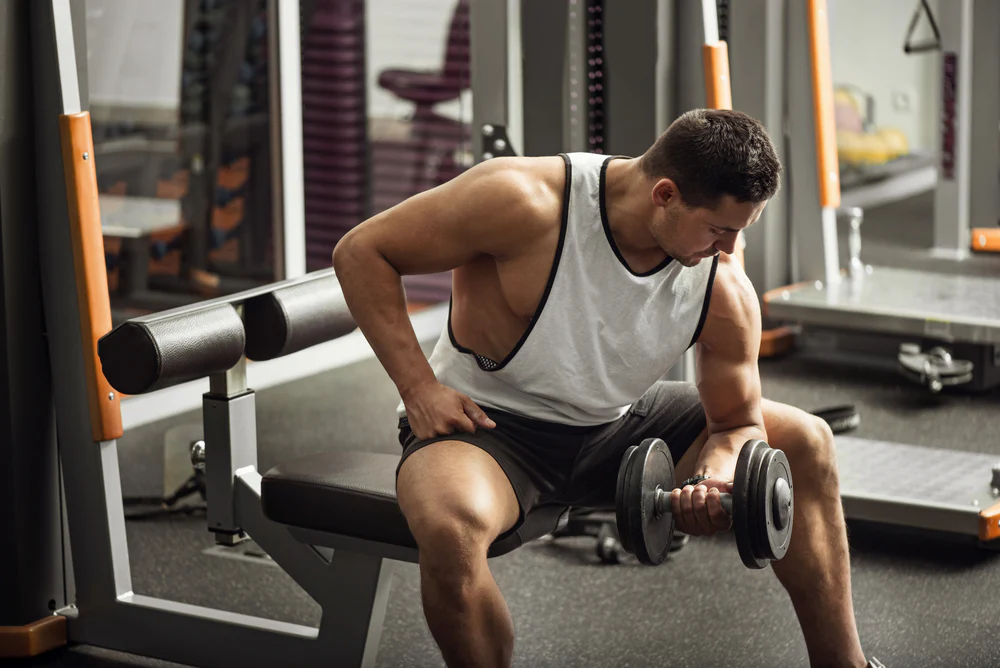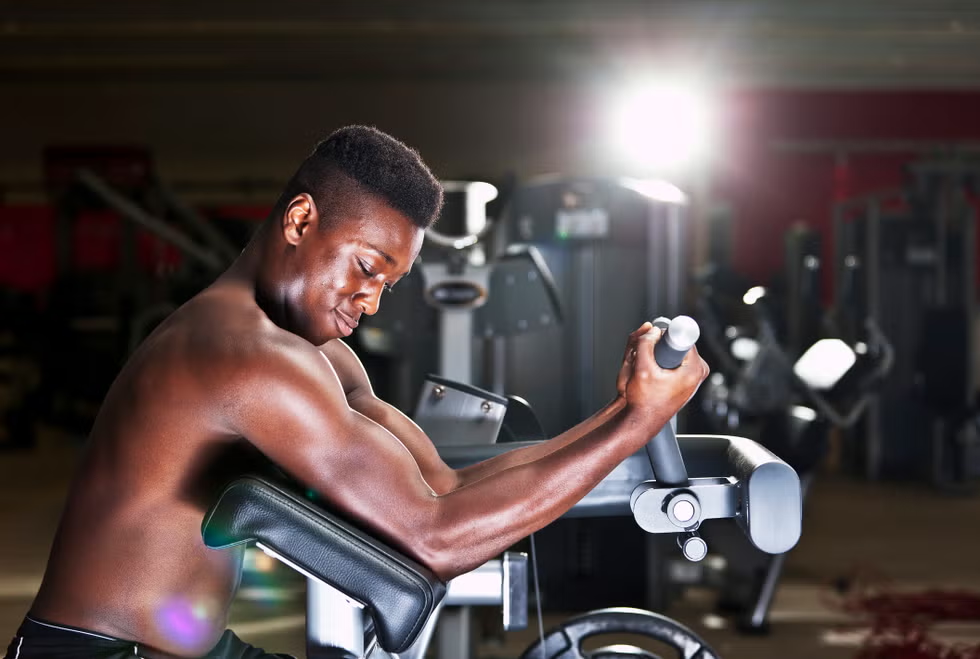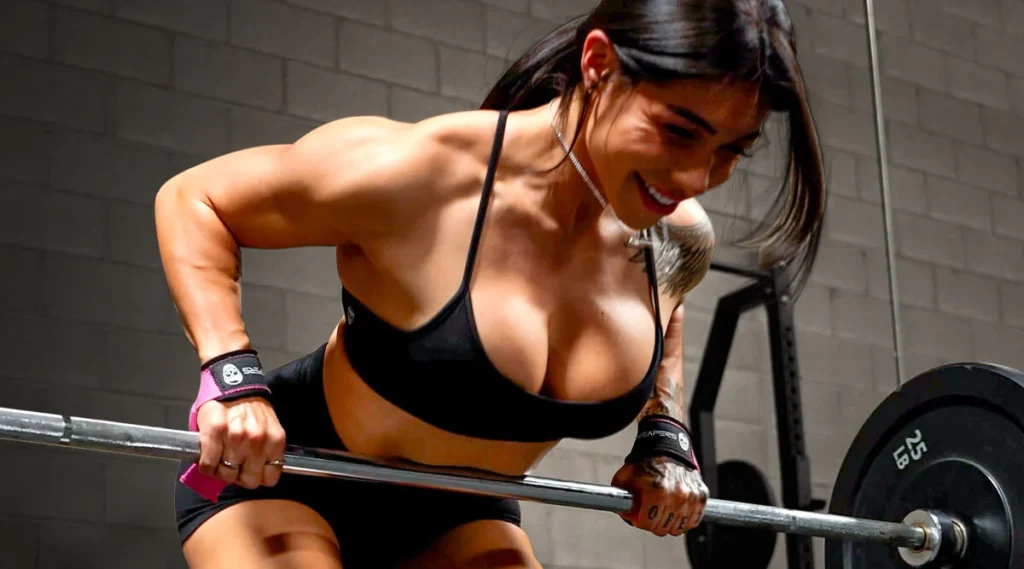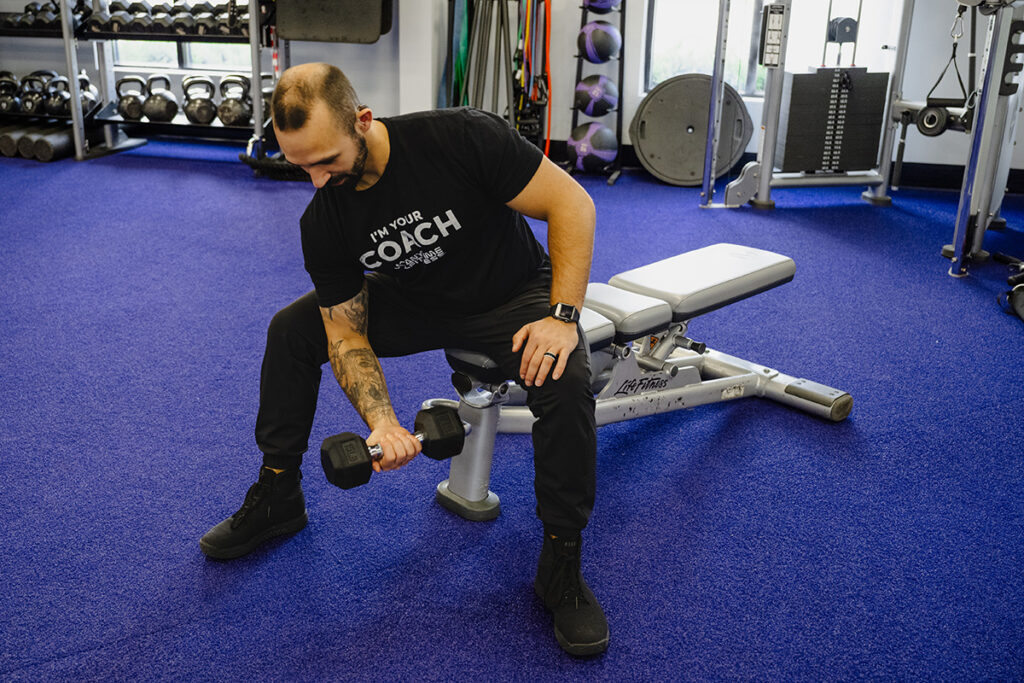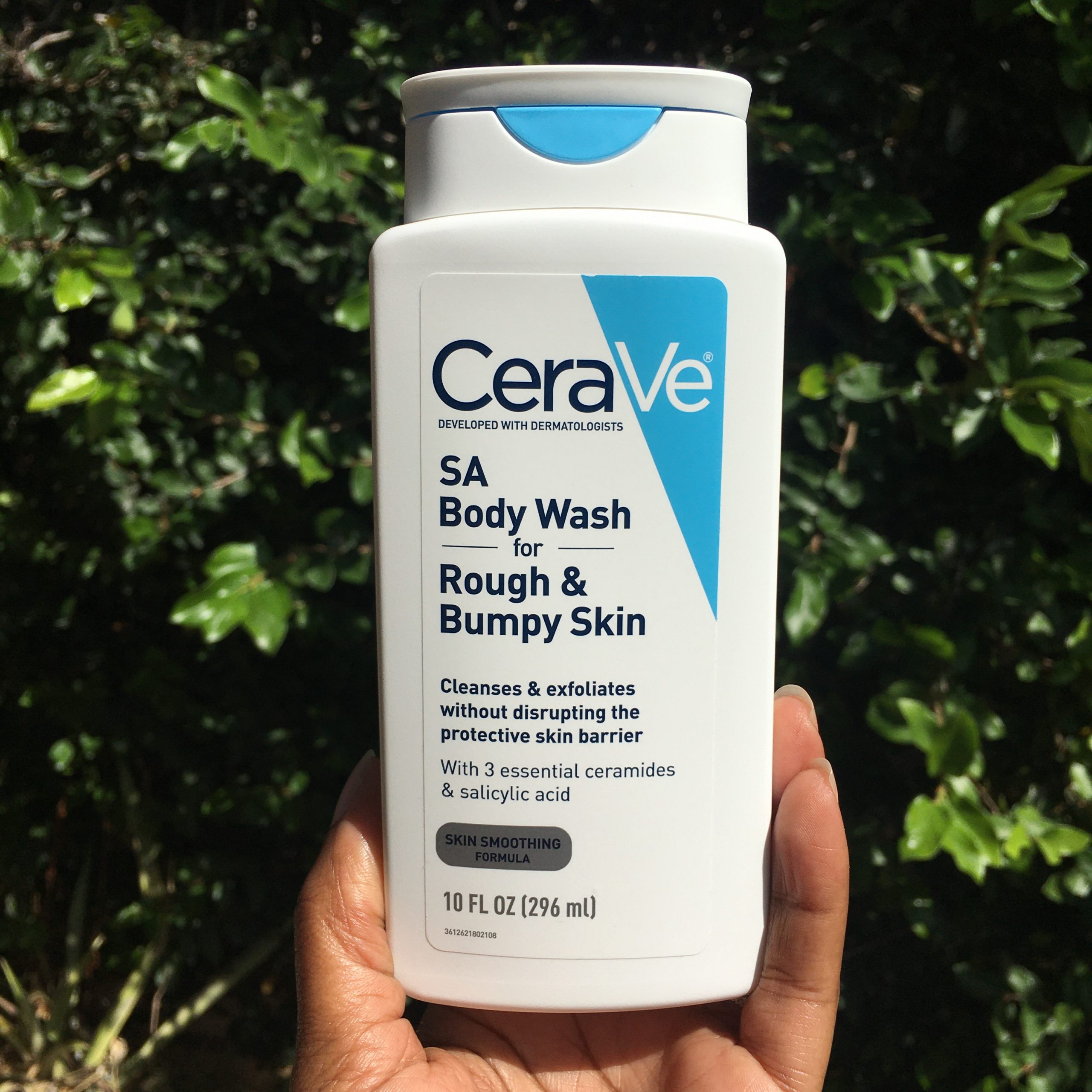Biceps Workout – When it comes to upper body aesthetics and functional strength, few muscle groups get as much attention as the biceps.
Whether you’re flexing in the mirror or reaching for a heavy object, strong biceps are both impressive and practical.
But building noticeable arms isn’t just about doing endless curls. A smart biceps workout targets the muscle with proper technique, the right variety, and progressive overload.
In this guide, we’ll cover the anatomy of the biceps, top exercises, a full workout plan, and expert tips to help you achieve sleeve-filling results.
Understanding the Biceps Muscle
Before we jump into the workout, let’s break down what the biceps are.
The biceps brachii is a two-headed muscle located on the front of your upper arm.
Short head: Positioned on the inner arm; contributes to width.
Long head: Runs along the outer part; adds a peak when flexed.
These muscles work together to flex the elbow, rotate the forearm, and stabilize the shoulder, which is why a variety of exercises is key for full development.
Best Biceps Exercises (Form + Tips)
To effectively train the biceps, you’ll want to hit the muscle from multiple angles. Here are the most effective biceps exercises you can add to your routine:
- Standing Dumbbell Curl
How to: Hold a dumbbell in each hand, palms facing forward. Curl the weights up while keeping your elbows close to your sides. Lower slowly.
Pro tip: Don’t swing your arms—use controlled movement.
- Barbell Curl
How to: Stand tall holding a barbell with both hands. Curl the bar up to shoulder level, then lower it with control.
Pro tip: This is great for lifting heavier weights and building mass.
- Hammer Curl
How to: Hold dumbbells with palms facing your torso. Curl both arms while keeping this neutral grip.
Pro tip: Target both the biceps and the brachialis (a deeper arm muscle).
- Incline Dumbbell Curl
How to: Sit on an incline bench with arms hanging straight down. Curl each dumbbell slowly, keeping your elbows locked in place.
Pro tip: Add an intense stretch for deeper muscle activation.
- Concentration Curl
How to: Sit on a bench, lean slightly forward, and rest your elbow against your thigh. Curl the dumbbell up with strict form.
Pro tip: Great for isolating the biceps and improving the mind-muscle connection.
- Preacher Curl
How to: Use a preacher bench to support your arms. Curl the bar or dumbbells slowly, emphasizing the bottom half of the movement.
Pro tip: Prevents momentum and helps build peak contraction.
- Cable Curl
How to: Attach a straight bar to a low pulley. Curl the bar up while keeping your elbows at your sides.
Pro tip: Provides constant tension throughout the range of motion.
Sample Biceps Workout Routine (30 Minutes)
Here’s a structured biceps workout plan you can do 1–2 times per week. It includes volume, variety, and progressive intensity for maximum growth.
- Exercise Sets Reps
- Barbell Curl 3 8–10
- Incline Dumbbell Curl 3 10–12
- Hammer Curl 3 10
- Preacher Curl 3 12
- Concentration Curl 2 12–15
- Rest 60–90 seconds between sets. Focus on squeezing the muscle at the top of each rep.
Biceps Training Tips for Bigger Gains
Want to take your results to the next level? Keep these training principles in mind:
Focus on Form Over Weight
It’s tempting to lift heavy, but clean, controlled reps lead to better muscle activation and reduce injury risk.
Use Full Range of Motion
Let your arms fully extend at the bottom of each curl for maximum stretch and activation.
Don’t Forget the Negatives
Slow, controlled lowering phases (eccentrics) help build more muscle than just the lifting part.
Mind-Muscle Connection
Focus on squeezing your biceps at the top of each rep. Visualizing the contraction improves engagement.
Mix it Up
Change your grip (supinated, neutral), angle, and equipment regularly to avoid plateaus and hit different parts of the biceps.
Can I Train Biceps Every Day?
While enthusiasm is great, your biceps need time to recover. Training them 1–3 times per week (depending on volume and intensity) is ideal. Overtraining can lead to stalled progress and even injury.
Who Should Do Biceps Workouts?
- Biceps workouts are beneficial for:
- Beginners wanting to build arm strength
- Bodybuilders focusing on arm aesthetics
- Athletes need functional upper-body strength
- Anyone looking to improve grip and pulling performance (pull-ups, rows, etc.)
Biceps Workout and Nutrition
No matter how perfect your form is, you won’t grow muscle without proper nutrition.
Eat enough protein: Aim for 0.7–1g per pound of body weight.
Hydrate: Muscles need water to recover and grow.
Don’t skip rest days: Your body repairs and grows muscle when you rest, not while you train.
Final Thoughts: Build Arms You’re Proud Of
Whether you’re a gym veteran or just starting, the biceps workout plays a key role in upper-body training.
With the right mix of exercises, consistency, and attention to form, you’ll develop strong, defined arms that don’t just look great—they perform great too.
Remember: it’s not just about curling heavy—it’s about training smart.

